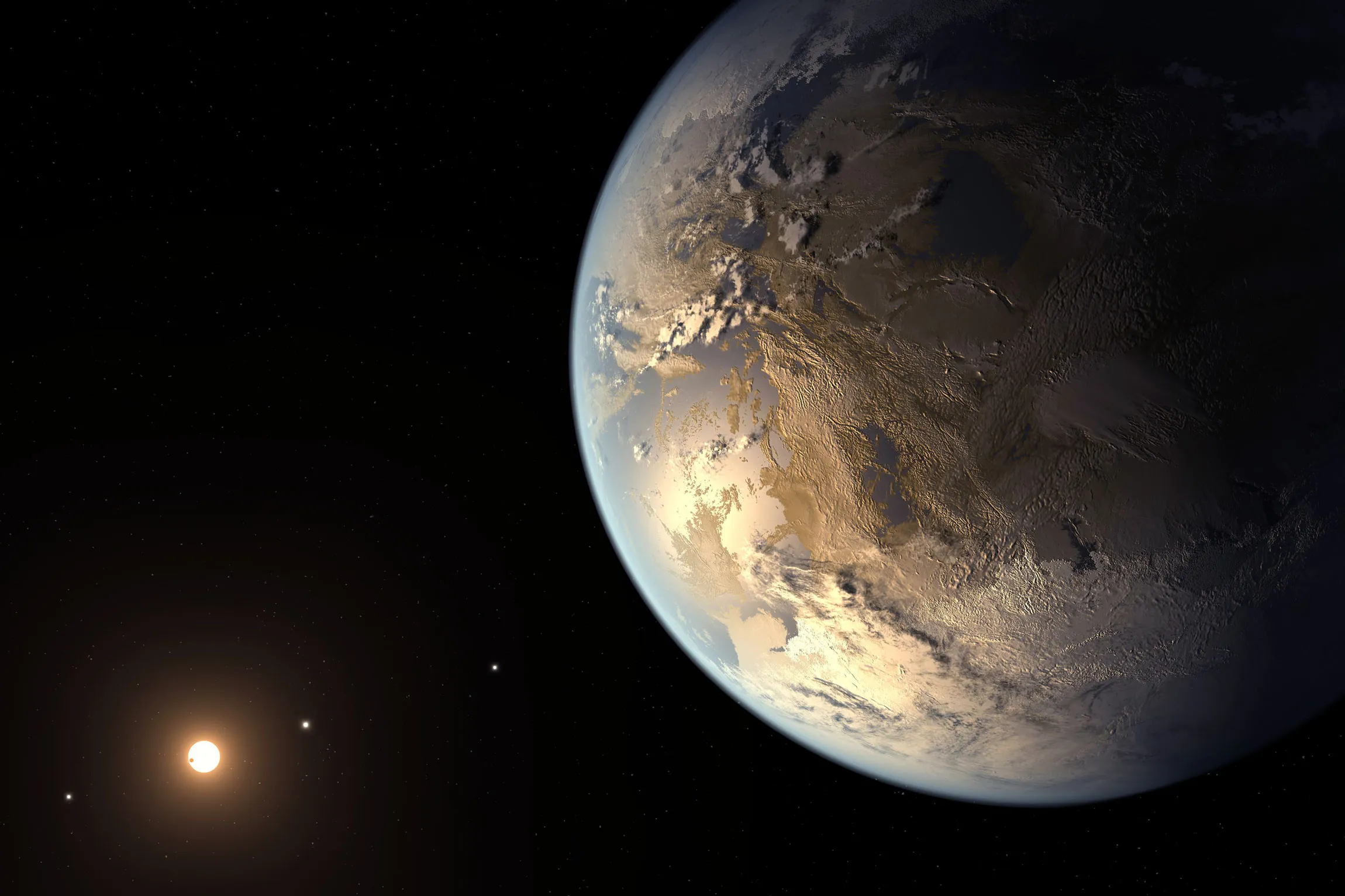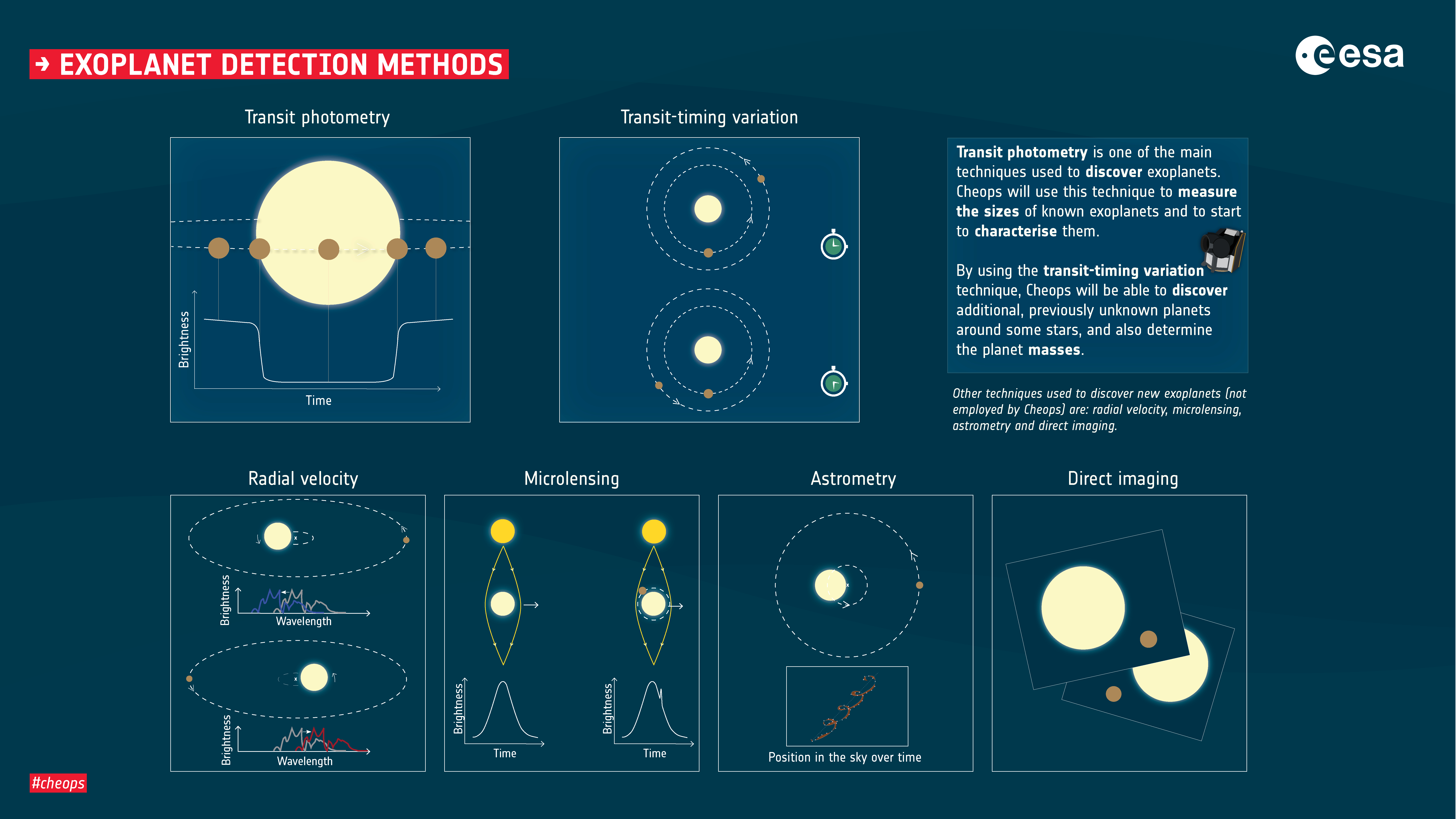About Exoplanets
"An exoplanet is any planet that orbits a star outside of our solar system. Scientists have discovered thousands of these planets using powerful telescopes. Some are similar to Earth, while others are gas giants like Jupiter, and some are even more bizarre! The search for exoplanets is one of the most exciting areas of astronomy because it helps us understand whether other planets like Earth could support life." "An exoplanet is any planet that orbits a star outside of our solar system. Scientists have discovered thousands of these planets using powerful telescopes. Some are similar to Earth, while others are gas giants like Jupiter, and some are even more bizarre! The search for exoplanets is one of the most exciting areas of astronomy because it helps us understand whether other planets like Earth could support life."

Discovery Methods
Exoplanets come in many shapes and sizes. Some are 'super-Earths' – rocky planets larger than Earth but smaller than Neptune. Others are 'hot Jupiters' – gas giants that orbit extremely close to their stars, making them blisteringly hot. Some exoplanets have atmospheres full of clouds, while others may have oceans of lava or ice. The variety of exoplanets makes the study of them even more fascinating, showing us that our solar system is just one tiny piece of the vast cosmic puzzle.
**How Do We Find Exoplanets?** "Exoplanets are incredibly far away, making it hard to observe them directly. Instead, astronomers use clever techniques to detect their presence. Here are some of the most popular methods:
**Transit Method:** "The most common way to find exoplanets is by observing the tiny dip in a star's brightness when a planet passes in front of it, blocking a small amount of the star’s light. This is called a 'transit.' By measuring the size and timing of the dip, astronomers can estimate the size of the planet and how far away it is from its star.
**Radial Velocity Method:** "Planets don’t just orbit stars – they tug on them slightly due to gravity. This makes the star wobble. By measuring this wobble through the star’s light, astronomers can determine the presence of a planet. This method helps us discover planets even when we can’t see them directly. It involves determining the radial velocity of a star by observing its blue or red shift caused by its motion towards or away from the observer
**Direct Imaging:** "While most exoplanets are too dim to be seen directly, scientists have developed special techniques to block out the bright light of stars, making it possible to capture images of the planets themselves. This method is rare but fascinating!
**Gravitational Microlensing:** "When a star passes in front of another distant star, the gravity of the foreground star can bend the light of the background star, magnifying it. If the star has a planet, the planet’s gravity also affects the light, giving away its presence."

Types of Exoplanets
**Gas Giants:** "Like Jupiter, gas giants are massive planets made mostly of hydrogen and helium. Some gas giants, called 'hot Jupiters,' orbit extremely close to their stars, reaching temperatures that could melt metal!"
**Featured Planet:** WASP-12b, a hot Jupiter so close to its star that it’s slowly being torn apart. - **Super-Earths:** "These are rocky planets that are larger than Earth but smaller than Neptune. Some super-Earths could potentially have Earth-like conditions, making them prime candidates for the search for life."
**Featured Planet:** Kepler-452b, a super-Earth orbiting in the habitable zone of a star similar to our Sun. -
**Neptunian Worlds:** "Planets similar in size to Neptune, with thick atmospheres made of hydrogen, helium, and ice. These planets may have layers of water, ammonia, or methane beneath their clouds." **Featured Planet:** GJ 436b, a Neptune-like planet with scorching temperatures despite being covered in ice!